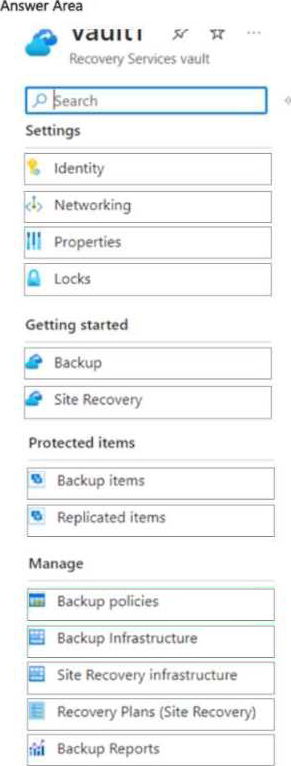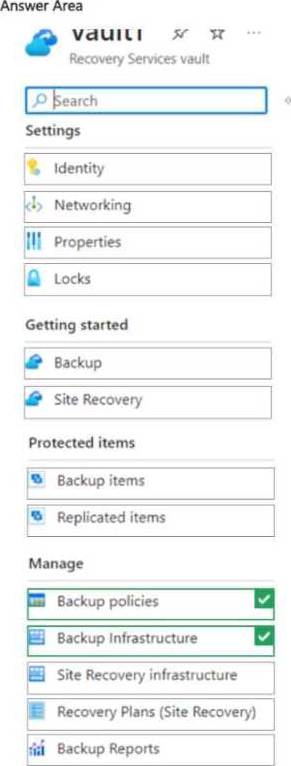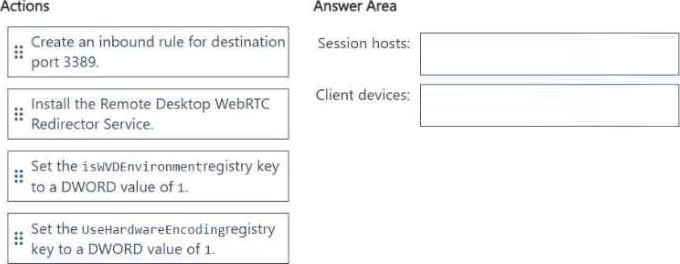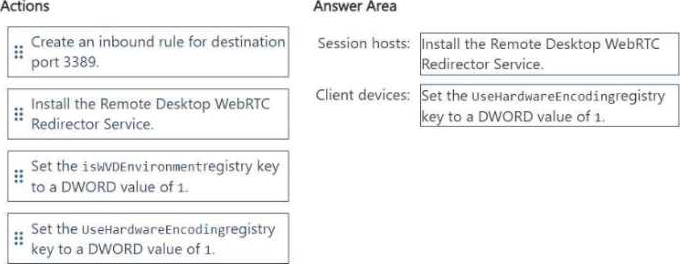Practice Free AZ-140 Exam Online Questions
You have an Azure Virtual Desktop deployment.
You plan to use just-in-time (JIT) VM access to manage session host virtual machines.
You need to recommend license requirements for JIT VM access. Your solution must minimize costs.
Which license should you recommend?
- A . Microsoft Defender for Servers Plan 2
- B . Microsoft 365 E5
- C . Enterprise Mobility + Security E5
- D . Microsoft Defender for Servers Plan 1
You need to configure the virtual machines that have the Pool1 prefix. The solution must meet the
technical requirements.
What should you use?
- A . a Windows Virtual Desktop automation task
- B . Virtual machine auto-shutdown
- C . Service Health in Azure Monitor
- D . Azure Automation
D
Explanation:
Azure Automation can be used to create a schedule that starts and stops the Pool1 virtual machines to ensure they are only running during business hours, thus meeting the technical requirement of operating within a specific time window and adhering to the principle of least privilege by not running resources when they are not needed.
Your network contains an on-premises Active Directory domain named contoso.com that syncs to an Azure Active Directory (Azure AD) tenant
You have an Azure Virtual Desktop host pool named Pool1 that has the following settings:
• Host pool name- Pool 1
• Host pool type: Personal
• Number of VMs: 3
The session hosts have the following configurations:
• Image used to create the virtual machines: Windows 10 Enterprise
• Virtual machines domain-Joined to: On-premises conroso.com domain
You need to ensure that you can use Microsoft EndPoint Manager to manage security updates on the session hosts.
What should you do?
- A . Create Windows 10 Enterprise multi-session images.
- B . Configure the session hosts as hybrid Azure AD-joined.
- C . Change Host pool type to Pooled and specify Load balancing algorithm as Depth-first
- D . Change Host pool type to Pooled and specify Load balancing algorithm as Breadth-first
Note: This question is part of a series of questions that present the same scenario. Each question in the series contains a unique solution that might meet the stated goals. Some question sets might have more than one correct solution, while others might not have a correct solution.
After you answer a question in this section, you will NOT be able to return to it. As a result, these questions will not appear in the review screen.
You have a Windows Virtual Desktop host pool that contains five session hosts. The session hosts run Windows 10 Enterprise multi-session.
You need to prevent users from accessing the internet from Windows Virtual Desktop sessions. The session hosts must be allowed to access all the required Microsoft services.
Solution: You configure the Address space settings of the virtual network that contains the session hosts.
Does that meet the goal?
- A . Yes
- B . No
HOTSPOT
You have an Azure subscription that contains the resources shown in the following table.

Share1 stores FSLogix profile containers and is backed up daily to Vault1.
You need to change the backup location of share1 to Vault2.
Which two settings should you modify for Vault1 to prepare for the change? To answer, select the appropriate settings in the answer area. NOTE: Each correct selection is worth one point.


Explanation:
Backup items
Backup Infrastructure
You have an Azure subscription that contains an Azure Compute Gallery named Gallery1 and a virtual machine named Template1 Template1 has custom apps and settings configured.
You plan to deploy Azure Virtual Desktop session hosts by using a custom virtual machine image.
The solution must meet the following requirements:
• The custom image must be stored in Gallery"1.
• The custom image must be based on Template1.
• All new session hosts must have unique compute1 names and identifiers.
You need to create the custom image.
What should you do in the Azure portal?
- A . From Template1 capture a generalized virtual machine image.
- B . From Gallery1, create a new VM image definition.
- C . From Gallery1, create a new VM application definition.
- D . From Template1, capture a specialized virtual machine image.
DRAG DROP
You have an Azure Virtual Desktop deployment that contains a host pool named Pooh.
Pool1 contains session hosts that run Windows 11 Enterprise and have Microsoft Teams installed.
Users connect to the session hosts by using client devices that run Windows 10 Enterprise.
You need to configure the session hosts and the client devices to meet the following requirements:
• Teams audio and video must be processed on the client devices.
• Hardware encoding must be enabled.
What should you do? To answer, drag the appropriate actions to the correct devices. Each action may be used once, more than once, or not at all. You may need to drag the split bar between panes or scroll to view content.
NOTE Each correct selection is worth one point.


Which two roles should you assign to Admin2 to meet the security requirements? Each correct answer presents part of the solution. NOTE: Each correct selection is worth one point.
- A . Desktop Virtualization Host Pool Contributor
- B . Desktop Virtualization Application Group Contributor
- C . Desktop Virtualization Workspace Contributor
- D . Desktop Virtualization Application Group Reader
- E . User Access Administrator
BC
Explanation:
You have an Azure Virtual Desktop deployment.
You need to recommend a solution to run containerized applications without installing the applications on the session hosts.
What should you include in the recommendation?
- A . EXE applications
- B . MSI packages
- C . APPX app packages
- D . MSIX app packages
D
Explanation:
Reference: https://docs.microsoft.com/en-us/windows/msix/msix-container
HOTSPOT
You have an Azure subscription that contains the storage accounts shown in the following table.

The subscription contains the vaults shown in the following table.

The subscription contains the Azure Virtual Desktop host pools shown in the following table.

For each of the following statements, select Yes if the statement is true. Otherwise, select No. NOTE Each correct selection is worth one point.


